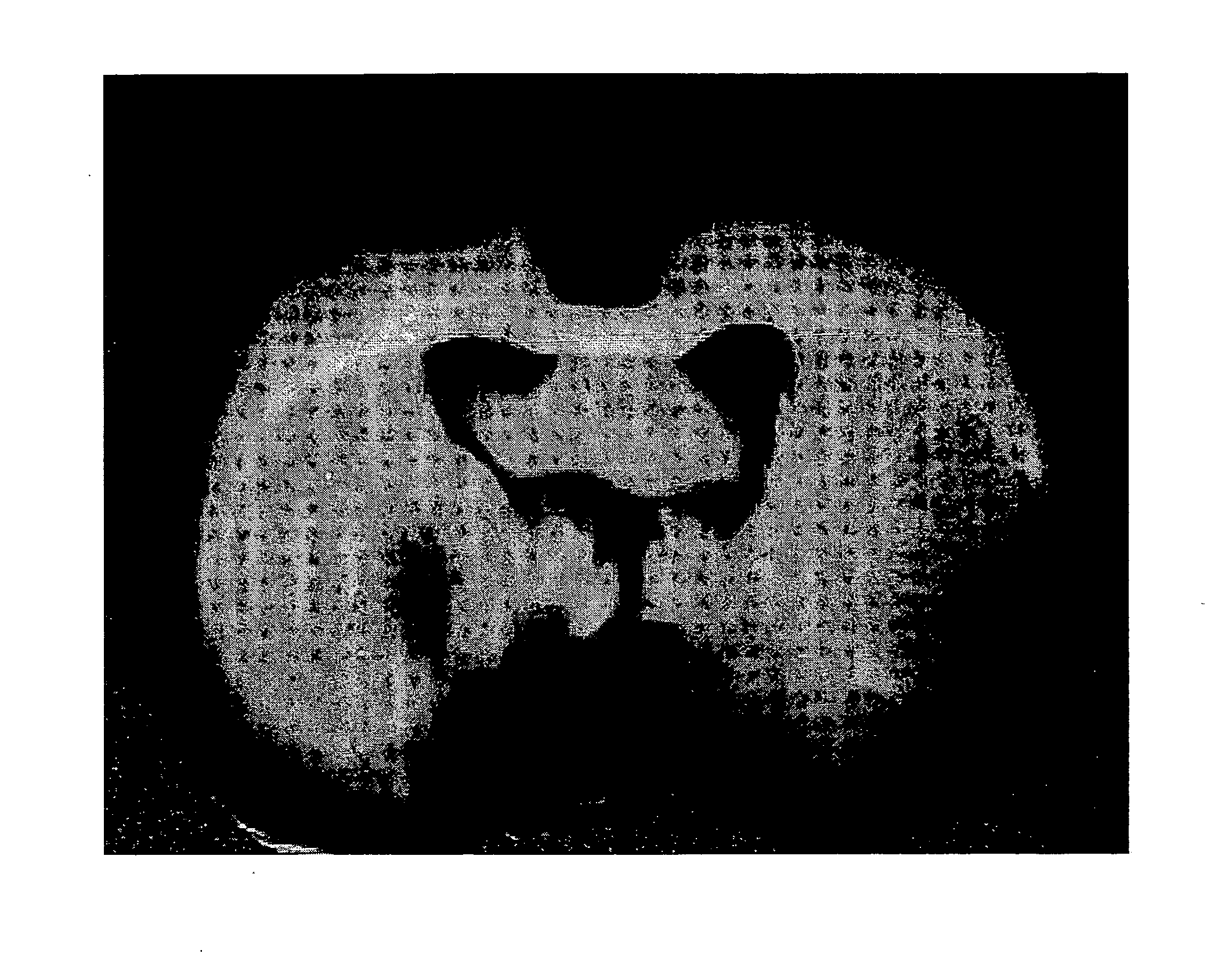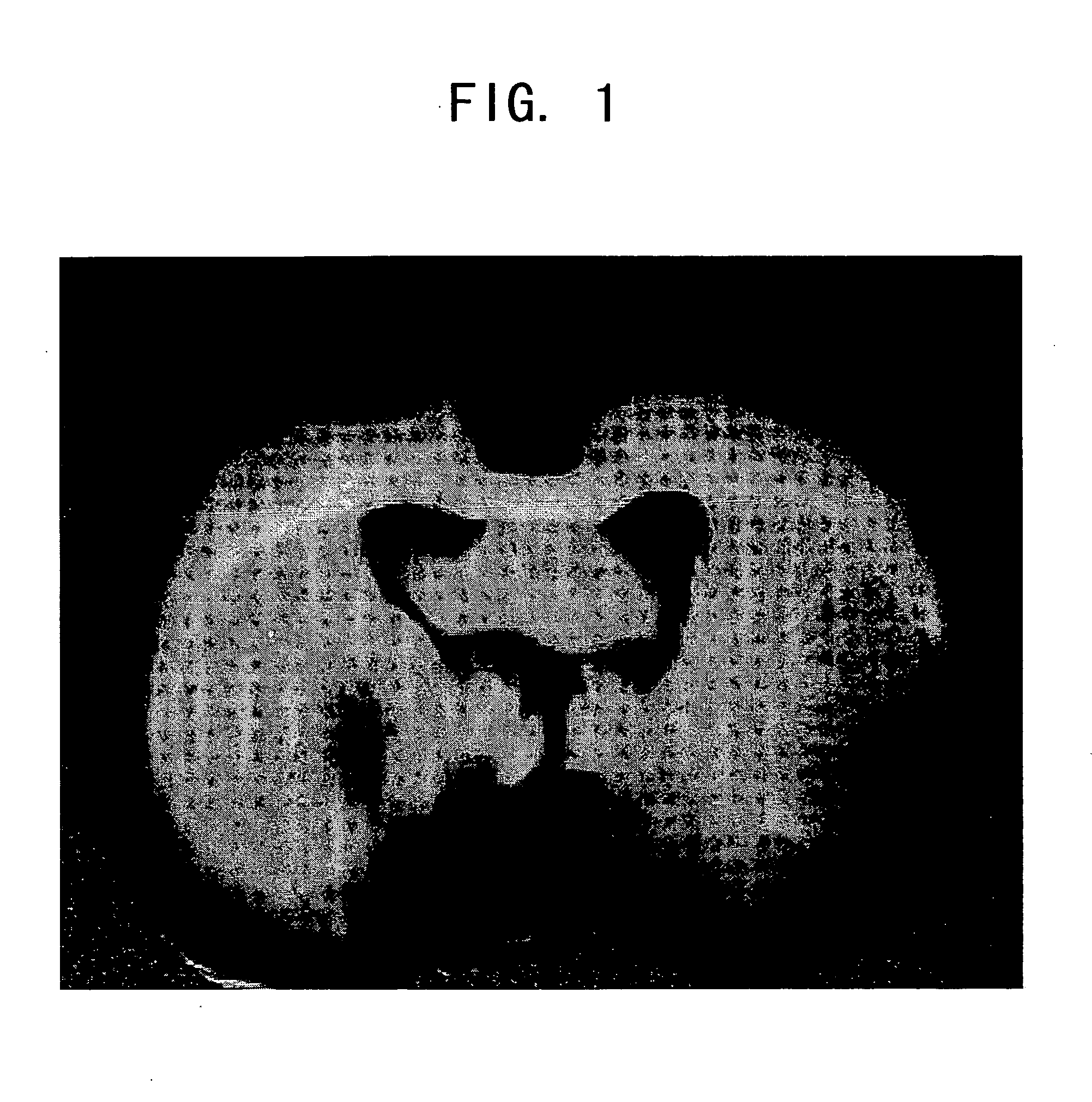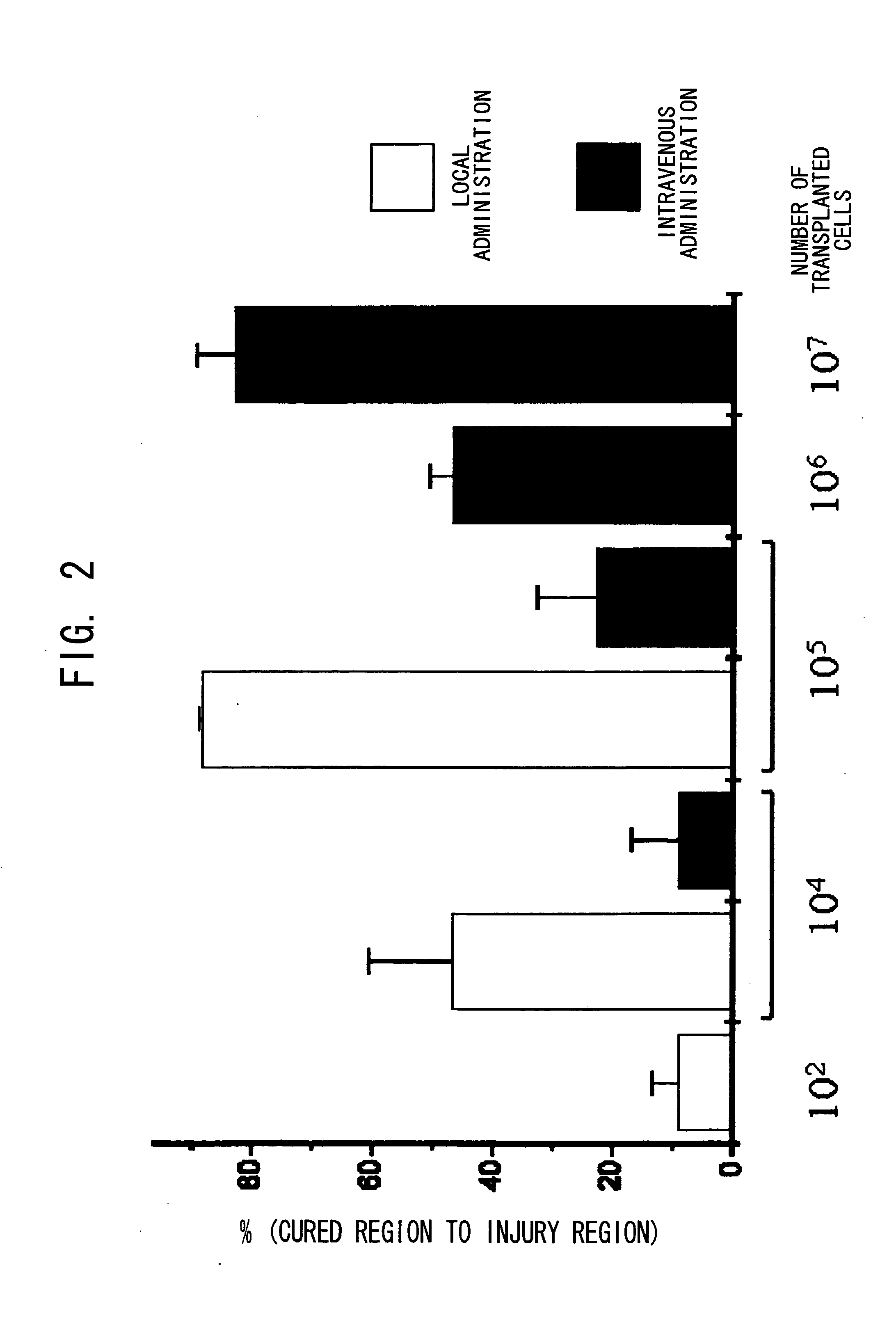Internally administered therapeutic agents for diseases in central and peripheral nervous system comprising mesenchymal cells as an active ingredient
a technology of mesenchymal cells and therapeutic agents, applied in the field of cranial nerve disease therapeutic agents, can solve the problems of difficult collection of tissues containing neural stem cells from the cerebrum, difficult preparation of such cells from patients or other persons, and high risk of infection,
- Summary
- Abstract
- Description
- Claims
- Application Information
AI Technical Summary
Benefits of technology
Problems solved by technology
Method used
Image
Examples
example 1
Transient Middle Cerebral Artery Occlusion Model
[0234] A rat middle cerebral artery occlusion model was used as a stroke model. Transient middle cerebral artery occlusion (MCAO) was induced for 45 minutes using the intravascular occlusion method (E. Z. Longa, P. R. Weinstein, S. Carlson, R. Cummins, Reversible middle cerebral artery occlusion without craniectomy in rats, Stroke 20 (1989) 84-91).
[0235] Adult male Sprague-Dawley rats (n=113) weighing 250 to 300 g were anaesthetized with 5% isoflurane, and the anesthesia was mechanically maintained with 1.5% isoflurane in a gaseous mixture of 70% N2O and 30% O2 under artificial ventilation. The rectal temperature was maintained at 37° C. using an infrared heat lamp. A cannula was inserted into the left femoral artery during surgery, for measuring blood pH, pO2, and pCO2. The tip of a 20.0 to 22.0 mm long 3-0 surgical suture (Dermalon: Sherwood Davis & Geck, UK) was rounded by heating near a flame, and was advanced from the external c...
example 2
Preparation of Bone Marrow Cells
[0237] Autologous bone marrow was collected from the femur of MCAO rats, one and a half hours prior to bone marrow cell transplant.
[0238] The rats were anaesthetized with ketamine (75 mg / kg) and xylazine (10 mg / kg; i.p.). A 1 cm incision was made in the skin, a small hole (2×3 mm) was punctured in the femur using an air drill, and 1 ml of bone marrow was aspirated using a 22-gauge needle. The collected samples were diluted and suspended in a medium containing 2 ml of L-15 medium and 3 ml of Ficoll (Amersham Biosciences). After centrifugation at 2,000 rpm for 15 minutes, mononuclear cell fractions were collected and resuspended in 2 ml serum-free medium (NPMM: Neural Progenitor Cell Maintenance Medium; Clonetics, San Diego, Calif., USA). Following a second centrifugation (2,000 rpm, 15 minutes), cells were suspended in 1 ml of NPMM.
example 3
Experimental Groups
[0239] The experiment was conducted using 11 groups (n=88). Nothing was administered to the Group 1 (control) rats after MCAO (n=8). The rats in Groups 2 to 6 were intravenously administered with just the medium (without donor cell administration), 3, 6, 12, 24, and 72 hours after MCAO (n=8 for each group). The rats in Groups 7 to 11 were intravenously administered with the autologous bone marrow cells (1.0×107 cells), 3, 6, 12, 24, and 72 hours after MCAO (each group n=8). Six rats in each group were used to calculate the infarct volume, and the others were used for other histological analyses.
PUM
 Login to View More
Login to View More Abstract
Description
Claims
Application Information
 Login to View More
Login to View More - R&D
- Intellectual Property
- Life Sciences
- Materials
- Tech Scout
- Unparalleled Data Quality
- Higher Quality Content
- 60% Fewer Hallucinations
Browse by: Latest US Patents, China's latest patents, Technical Efficacy Thesaurus, Application Domain, Technology Topic, Popular Technical Reports.
© 2025 PatSnap. All rights reserved.Legal|Privacy policy|Modern Slavery Act Transparency Statement|Sitemap|About US| Contact US: help@patsnap.com



